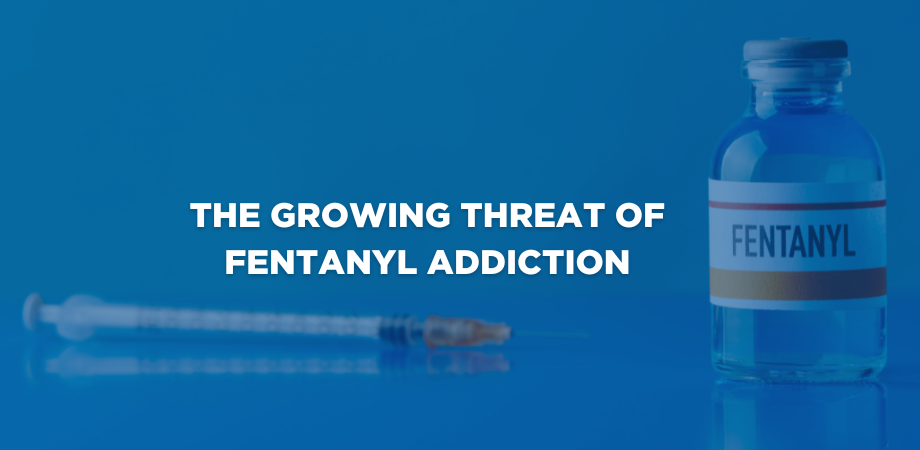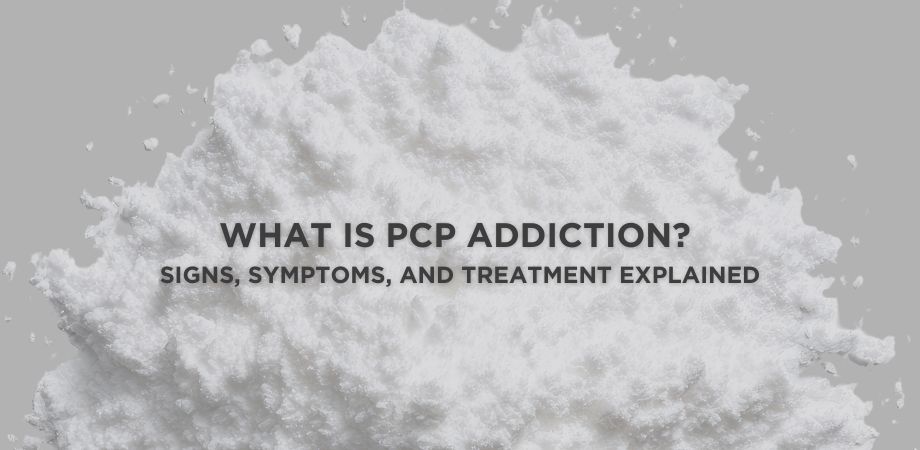Fentanyl is the core of the global opioid crisis, responsible for the majority of opioid overdose deaths. The U.S. CDC reports fentanyl as a leading cause of accidental overdose worldwide. In India, law enforcement has seized rising quantities of synthetic opioids, signaling a growing public health concern.
Fentanyl is a synthetic opioid that is 50 to 100 times more potent than morphine. Doctors prescribe it legally for severe pain, such as in advanced cancer care. However, it is also manufactured illegally and sold on the streets, often mixed with heroin or pressed into fake pills. Users may not realize what they are consuming, which makes it extremely dangerous.
Fentanyl addiction is deadly, but it is treatable. This article explores its symptoms, warning signs, causes, health risks, and evidence-based treatment pathways that bring hope for recovery in India and across the globe.
What is Fentanyl?
Fentanyl is a synthetic opioid first created in the 1960s. Doctors use it for severe pain, often after surgery or in advanced cancer care. It works quickly and is far stronger than morphine.
There are two main types. Pharmaceutical fentanyl is prescribed in hospitals and comes in patches, lozenges, or injections. Illicit fentanyl is made illegally in labs and sold on the street. This form is far more dangerous because users cannot know its strength.
On the street, fentanyl is called China White, Apache, Dance Fever, or Murder 8. Dealers often mix it with heroin, cocaine, or meth. They also press it into fake prescription pills that look like OxyContin or Xanax. Many people take these pills without knowing they contain fentanyl.
The danger comes from its extreme potency. Fentanyl is 50–100 times stronger than morphine. Even a few grains can be fatal. This makes accidental overdose very common and explains why fentanyl drives most opioid deaths worldwide.
How Fentanyl Addiction Develops?
Fentanyl delivers a powerful rush quickly. Many users feel a strong euphoria early. The brain begins to demand that feeling again and again. Tolerance rises fast—what once gave a high now seems weak.
Even short-term medical use can lead to dependence if misused. Some patients use extra doses or continue longer than prescribed. For illicit users, the danger is even higher—no one knows the exact dose in street pills. That uncertainty speeds up addiction, both psychologically and physically.
With repeated use, the brain’s reward system rewires. Natural pleasures fade. Cravings grow stronger than logic. This sets a trap few escape without support.
In India, authorities have seized counterfeit pills laced with fentanyl, highlighting the hidden risk many users face. For example, Indian online pharmacies were sanctioned for distributing fentanyl-laden counterfeit pills.
Signs and Symptoms of Fentanyl Addiction
Fentanyl dependence shows up in different ways like affecting behavior, physical health, and mental well-being. Families and friends should pay close attention to the following warning signs:
Behavioral signs:
These reflect noticeable changes in a person’s actions and routines:
- Acting secretive, hiding drug use, or lying about consumption
- Visiting multiple doctors to obtain extra prescriptions
- Borrowing or stealing pills to manage cravings
- Pulling away from friends and family, preferring isolation
Physical signs:
These symptoms can be observed in the body and overall appearance:
- Frequent drowsiness or suddenly “nodding off”
- Very small, constricted pupils (pinpoint pupils)
- Slowed or shallow breathing patterns
- Ongoing nausea, reduced appetite, and noticeable weight loss
Psychological signs:
These affect mood, thoughts, and mental balance:
- Strong cravings or urges to use fentanyl
- Sudden mood swings, irritability, anxiety, or depression
- Difficulty focusing or making clear decisions
According to a research study, the prolonged use of fentanyl triggers neuroinflammation and oxidative stress in the brain, which strengthens dependency and makes withdrawal symptoms harder to manage.
Causes of Fentanyl Addiction
Fentanyl addiction usually begins through medical exposure, mental health vulnerability, and environmental pressures.
Medical causes:
Many users start with a legal prescription because fentanyl is 50-100 times stronger than morphine, and tolerance builds fast. Patients may unknowingly increase dosage to relieve pain. Concomitant use of benzodiazepines or alcohol further raises risks.
Psychological causes:
Psychiatric comorbidities, such as anxiety, depression, and trauma, frequently accompany opioid dependency. In India, a hospital-based study of opioid injectors found that 88.1% had at least one psychiatric disorder, including anxiety and social anxiety. This suggests mental health stress strongly elevates addiction risk. Globally, studies show that untreated psychological distress increases the likelihood of developing opioid use disorder.
Social & environmental causes:
In India, opioid prevalence touches 0.7%, with heroin use and prescription opioid diversion contributing to substance misuse. Weak regulations, illicit trafficking, and peer influence magnify access to fentanyl or fentanyl-laced drugs. In the U.S. and other countries, synthetic opioids like fentanyl dominate overdose deaths as they are cheaply manufactured and mixed with other drugs.
In essence, fentanyl addiction in India and globally arises from prescription misuse, underlying mental health vulnerabilities, and widespread illicit access. Recognizing these causes helps build prevention and treatment strategies.
The Danger of Fentanyl Overdose
Fentanyl overdose is deadly because it suppresses breathing so severely that users can stop breathing within minutes. The drug acts on the brainstem’s respiratory center, making breathing shallow or ceasing altogether.
Many overdoses happen because users don’t realize they consumed fentanyl, dealers often mix it into heroin or press it into counterfeit pills. The person may think they’re taking a weaker opioid, and the fentanyl dose proves fatal.
Typical overdose symptoms include:
- Limp, unresponsive body
- Cold, clammy skin
- Bluish lips or fingertips
- Very slow or absent pulse
- Extremely slow or halted breathing
In such emergencies, naloxone (Narcan) can save lives if given quickly. Naloxone is an opioid antagonist that reverses respiratory depression and restores breathing. Because fentanyl is so potent, multiple doses of naloxone may be needed before full reversal occurs. Medical help must follow, since naloxone’s effects wear off sooner than fentanyl’s in many cases.
A community study in India among people who inject drugs revealed that none of the participants were aware of naloxone’s use, highlighting the urgent need for overdose education and access.
Why Is Professional Treatment Critical?
Professional treatment is essential for people struggling with fentanyl addiction. Stopping fentanyl suddenly without support is not safe.
- Physical withdrawal symptoms include: severe pain, diarrhea, vomiting, and tremors.
- Psychological withdrawal symptoms include: anxiety, sleeplessness, and suicidal thoughts.
These symptoms make relapse very likely if a person tries to quit alone. Medical detox is the safest choice. Doctors monitor the body and provide medicines that reduce discomfort and stabilize vital functions.
After detox, long-term recovery depends on structured care. Options such as inpatient rehab, therapy, and relapse prevention programs help people build resilience.
Holistic and evidence-based treatment combines medical care, counseling, and lifestyle support. Studies show this integrated approach leads to better outcomes than self-detox or short-term fixes. For families in India and across the globe, professional treatment offers both safety and hope for lasting recovery.
Treatment Options for Fentanyl Addiction
There are different treatment options available for fentanyl addiction, focusing on the structured approach. However, no single method can work out for everyone suffering from fentanyl dependence. The most effective programs combine medical care, psychological support, and social reinforcement.
A. Medical Detox
Medical detox i.e., cleansing with medicine,s is the first step in treatment. It takes place in a safe and supervised environment where withdrawal symptoms are carefully managed. Doctors and trained medical staff closely monitor important signs and provide support to ease discomfort, reduce anxiety, and manage cravings. This process helps lower the chance of relapse and allows the individual to regain stability before moving forward with further stages of recovery.
B. Inpatient Rehab
Inpatient rehab provides a structured residential setting for 30 to 90 days. It is best for severe cases or when the home environment is unsafe. Patients receive 24/7 medical support, individual therapy, and relapse prevention training. Many centers in India now offer inpatient care with holistic elements such as yoga, meditation, and nutritional therapy.
C. Outpatient Programs
Outpatient rehab is a good option for those individuals who get stable after detox or unable to step away from daily duties. These programs include part-time therapy sessions, family involvement through counseling, and regular relapse checks. Moreover, they provide flexibility while ensuring consistent professional guidance and care.
D. Medication-Assisted Treatment (MAT)
Medication-Assisted Treatment (MAT) supports the long-term recovery by using approved medical interventions by medical specialists. This approach helps reduce cravings, manage withdrawal symptoms, and block the serious effects after detox. Generally, this method is combined with therapies which continues for months depending on the individual’s needs.
E. Behavioral Therapy
Therapy addresses the root causes of addiction. Cognitive Behavioral Therapy (CBT) helps restructure harmful thoughts. Contingency Management uses rewards for clean behavior. Motivational Interviewing builds internal motivation to change. These approaches are evidence-based and highly effective.
F. Dual Diagnosis Treatment
Patients battling fentanyl addiction also experience conditions such as anxiety, PTSD, or depression. It is highly important to address both issues at the same time to reduce the risk of relapse. Hence, a combined approach that treats mental health alongside addiction provides the foundation needed for lasting recovery.
G. Support Networks
Peer support programs like Narcotics Anonymous (NA) or SMART Recovery provide ongoing encouragement. Support groups help individuals stay accountable and connected, which is crucial after formal treatment.
In India and worldwide, combining medical detox, therapy, medication, and social support gives the best chance of recovery from fentanyl addiction.
Recovery and Relapse Prevention
Recovery from fentanyl addiction does not end after detox or rehab. Since addiction is a chronic condition, long-term care is essential. Relapse is common, but it is not a failure. It simply signals the need for immediate return to treatment.
Effective relapse prevention includes ongoing therapy, sober living arrangements, peer support groups, and, when needed, continued Medication-Assisted Treatment (MAT). A structured daily routine and a purpose-driven lifestyle help individuals stay focused and avoid triggers.
At Alpha Healing Center in India, relapse prevention is at the core of recovery. We combine evidence-based therapies with holistic practices like meditation, mindfulness, and yoga. Our expert team ensure that patients heal both mentally and physically with lifelong coping strategies. With professional guidance and compassionate support, we empower our patients to rebuild their lives and sustain long-term sobriety.
How to Help a Loved One?
If you or your loved one is suffering from fentanyl addiction, here’s how you can help them overcome this addiction:
- Recognize red flags early
Notice sudden behavior changes, secrecy, or withdrawal from family life. Acting quickly improves the chance of recovery. - Approach with compassion and boundaries
Avoid blame or judgment. Speak with empathy while setting clear, healthy limits. - Seek professional intervention if needed
If communication becomes too difficult, a trained interventionist can help guide the discussion and reduce conflict. - Encourage treatment resources
You must share information about rehab centers, detox programs, and support services available in India and globally. - Engage in family therapy and support groups
Join groups like Narcotics Anonymous Family Programs or local community support circles. Family involvement strengthens recovery and prevents relapse.
By combining early recognition, compassion, and professional support, families can play a powerful role in guiding loved ones toward treatment and long-term healing.
Conclusion
Fentanyl addiction is among the most dangerous and fast-growing public health crises worldwide, including in India. While the risks are severe, recovery is possible with the right support. Professional medical treatment saves lives and restores hope.
At Alpha Healing Center, individuals receive expert care, holistic therapies, and compassionate support tailored to long-term recovery. Many people have not only survived fentanyl addiction but also rebuilt meaningful, healthy lives.
If you or a loved one is struggling, reach out today. Help is available, and healing is possible!
Frequently Asked Questions
What does fentanyl withdrawal feel like?
Fentanyl withdrawal feels intense and painful. Common symptoms include muscle aches, diarrhea, vomiting, anxiety, insomnia, and strong cravings. Medical detox can ease these effects safely.
How long does fentanyl stay in your system?
Fentanyl usually stays in the system for 24–72 hours. However, detection varies by test type: urine (up to 3 days), blood (up to 48 hours), and hair (up to 90 days).
Is fentanyl addiction treatable?
Yes, fentanyl addiction is treatable. Medical detox, medication-assisted treatment (MAT), behavioral therapies, and long-term support programs help people recover and maintain sobriety.
Can naloxone save someone from a fentanyl overdose?
Yes, naloxone (Narcan) can reverse a fentanyl overdose if given quickly. Because fentanyl is very potent, multiple doses may be required. Immediate medical help is still essential.





